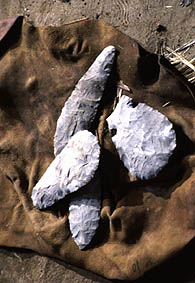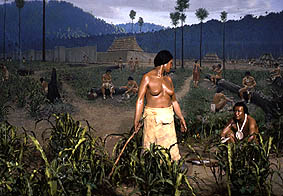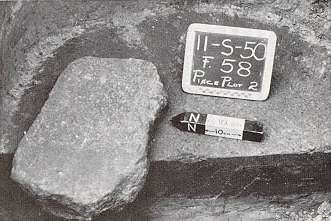
Mill Creek chert hoes, Illinois State Museum.
|
The spent chert hoes and hoe fragments that litter elevated land where agricultural fields were located tell us that Mississippian farmers did not neglect their crops; they actively hoed, weeded, and otherwise tended their fields. Furthermore, it is important to realize that used tools were not discarded haphazardly. They were resharpened, maintained, and converted to different purposes until they could be used no more. Broken pots, for example, were often converted into platters by grinding down broken edges of large pieces. Broken hoes were often notched and re-hafted for continued use.

Woman tending field and chert hoe maintenance, Illinois State Museum.
|
 Metate from the Turner site.
Metate from the Turner site.